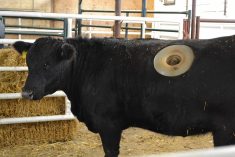Flax delivered into the commercial grain handling system this fall will face more rigorous and costly testing procedures to ensure it is CDC Triffid-free than were in place last year, the Flax Council of Canada says.
As of Sept. 1, commercial deliveries will undergo the same degree of testing for the genetically modified flax variety currently used for pedigreed and farm-saved seed, spokesman Les Rankin said in an interview.
Instead of testing a single sample drawn from the two-kg samples supplied by producers, laboratories will draw and test four 60-gram sub samples from what producers submit.
Read Also

Moo translator and methane measures: There’s an app for that
Dalhousie University researchers use artificial intelligence to create new dairy farm apps that analyze cattle sounds and measure methane.
“All four lots must be Triffid-free for the result to be considered a negative result,” the council says in a message to producers. “The industry has called for this procedure because using multiple sub samples significantly increases the reliability of test results.”
Europe’s tolerances for CDC Triffid are currently set at .01 per cent, or one seed in 10,000. Rankin said between eight to 10 per cent of Canadian flax deliveries have been testing positive for CDC Triffid at above the .01 level, but below the .1 per cent standard Canadian officials would like to see.
Rankin said the new requirement will nearly double testing fees, increasing the cost of testing a 100-acre field from $100 to $195. But the industry’s stringent testing is paying off.
“It’s not like the European market is dead to us, we are getting back in,” he said.
Having reliable test results also enables the industry to do a better job marketing shipments to appropriate markets. Rankin noted a large crop last year meant Canadian flax exports were up over the year previous, even though shipments to Europe – the industry’s largest market – were stalled since last summer.
Canadian flax began to move back into Europe earlier this year, although the actual volumes traded aren’t known. Flax found to be tainted with the genetically modified flax can be crushed domestically and the oil exported, or it can be sold into markets that are more tolerant of genetically modified crops.
More than 6,000 farm samples have been analyzed to date. Rankin said it has been the willingness of producers to co-operate with the industry that has helped re-establish Europe as a viable market so quickly.
Farmers looking for an approved laboratory for CDC Triffid testing can find information on the Flax Council website ( www.flaxcouncil.ca).















